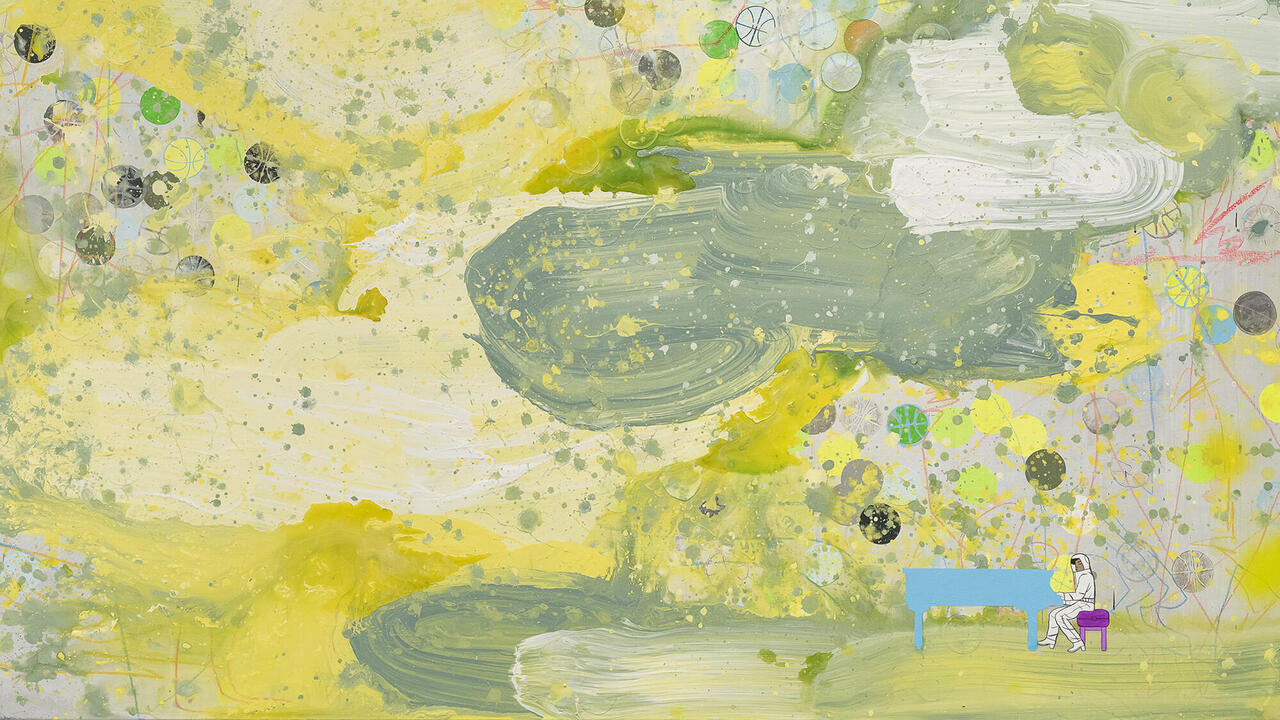Erica Baum
Marc Jancou Contemporary
Marc Jancou Contemporary

Writing in Screen magazine in 1975, feminist film theorist Laura Mulvey highlights the voyeuristic structures of traditional narrative cinema. Drawing on psychoanalysis, she argues that conditions of screening and narrative conventions keep the audience firmly in a fantasy position. Citing film critic Jean Douchet, who reads Hitchcock’s Rear Window (1954) as a metaphor for the process of eroticization by scrutinization, Mulvey reminds us that for Freud, the pleasure of looking is a constitutive urge in sexuality.
Erica Baum’s series of photographs, Naked Eye (2008–ongoing), situates itself within this critical context in several ways. In formal terms, the works present themselves as peepholes. Hachured by vertical lines, the black and white images appear as glimpses snatched through shutters. One’s first impression (giving the viewer a feeling of total power over the work) is that of action freezing under the force of one’s gaze. And in the presenceof Agnes (2008) or Nora (2012), a masculine eye might indeed pride itself on having caught a fleeting glance of an unknown beauty appearing for a few seconds at her window.
In fact, Naked Eye inverts the aesthetic of scopophilia by an ingenious manipulation. Like the wheelchair-bound photographer Jeff in Rear Window, Baum’s viewer is cast as a voyeur, not by vice, but by necessity. Focusing initially on the evidence presented, one instinctively tries to turn the images into a story. In Hitchcock’s film, the domestic scenes witnessed by Jeff from his apartment are sterile with nothing to prompt a narrative approach. In the film as a whole, Jeff’s passivity increasingly becomes the key to the action. Faced with the works in the Naked Eye series, the viewer, although purportedly mobile within the gallery space, is also paralyzed. Baum’s pictures, photographs of pictures in semi-open books, bracket the gaze. Segmented by blocks of pages, the eye initially concentrates on images with strong fictional potential such as in Flint, 2009 before coming to rest on scraps of language. Precisely because the photographed images are inserted into indeterminate and indeterminable literary material in this way, the viewer cannot truly free him or herself from them. On the surface of her works, as with the facades filmed by Hitchcock, Baum constructs a false artlessness. She revisits the concept of ‘facingness’ developed by Michael Fried in regard to Édouard Manet’s Olympia (1863), using it to invert Mulvey’s proposition. The artist forces the viewer into voyeurism without recourse to gender theory and without being able to count on phallocentrism or paternalism. Here, it is the manipulated characters who lookout boldly at the viewer, and not the reverse.
Translated from the French by Nicholas Grindell
















